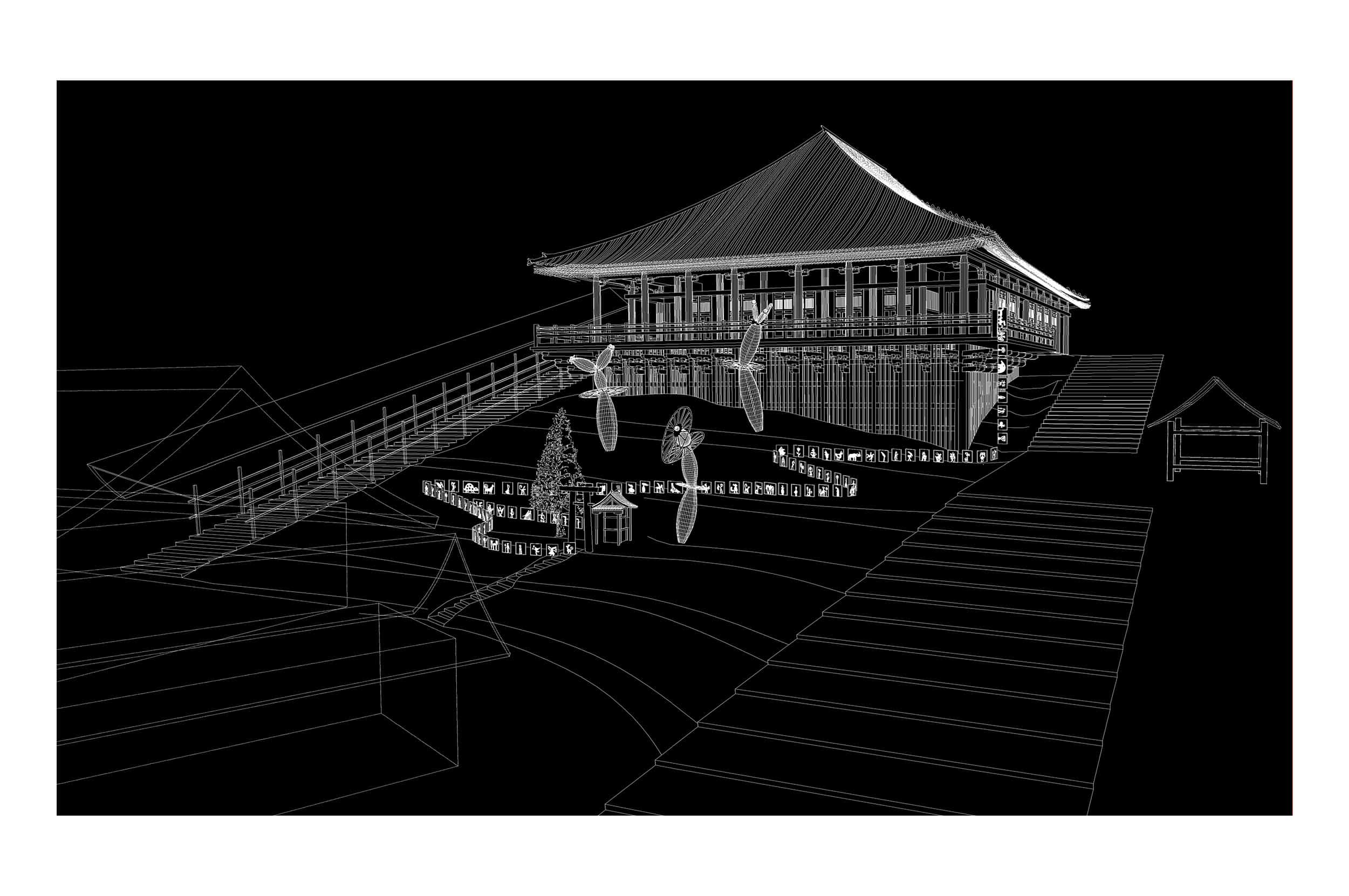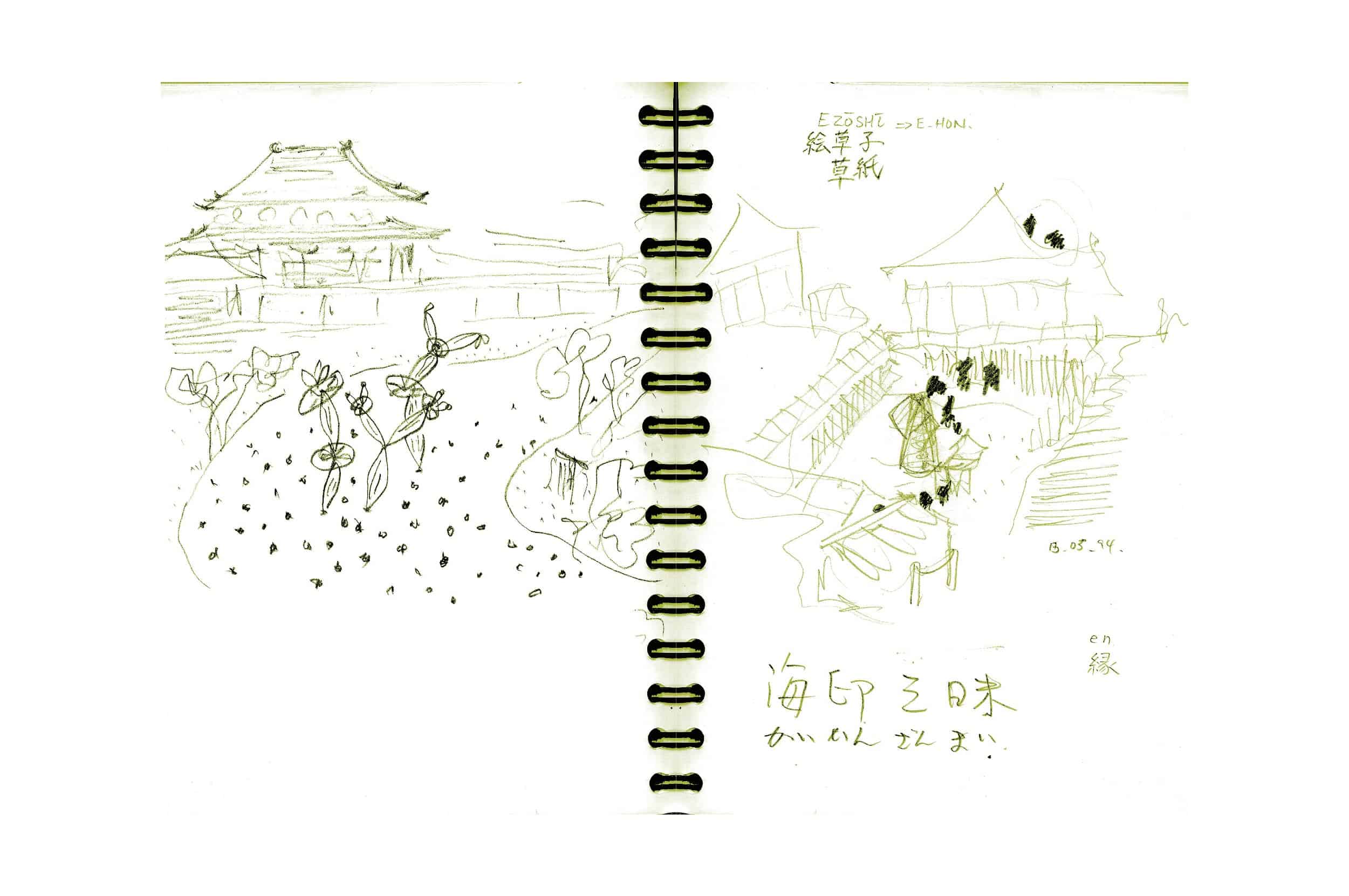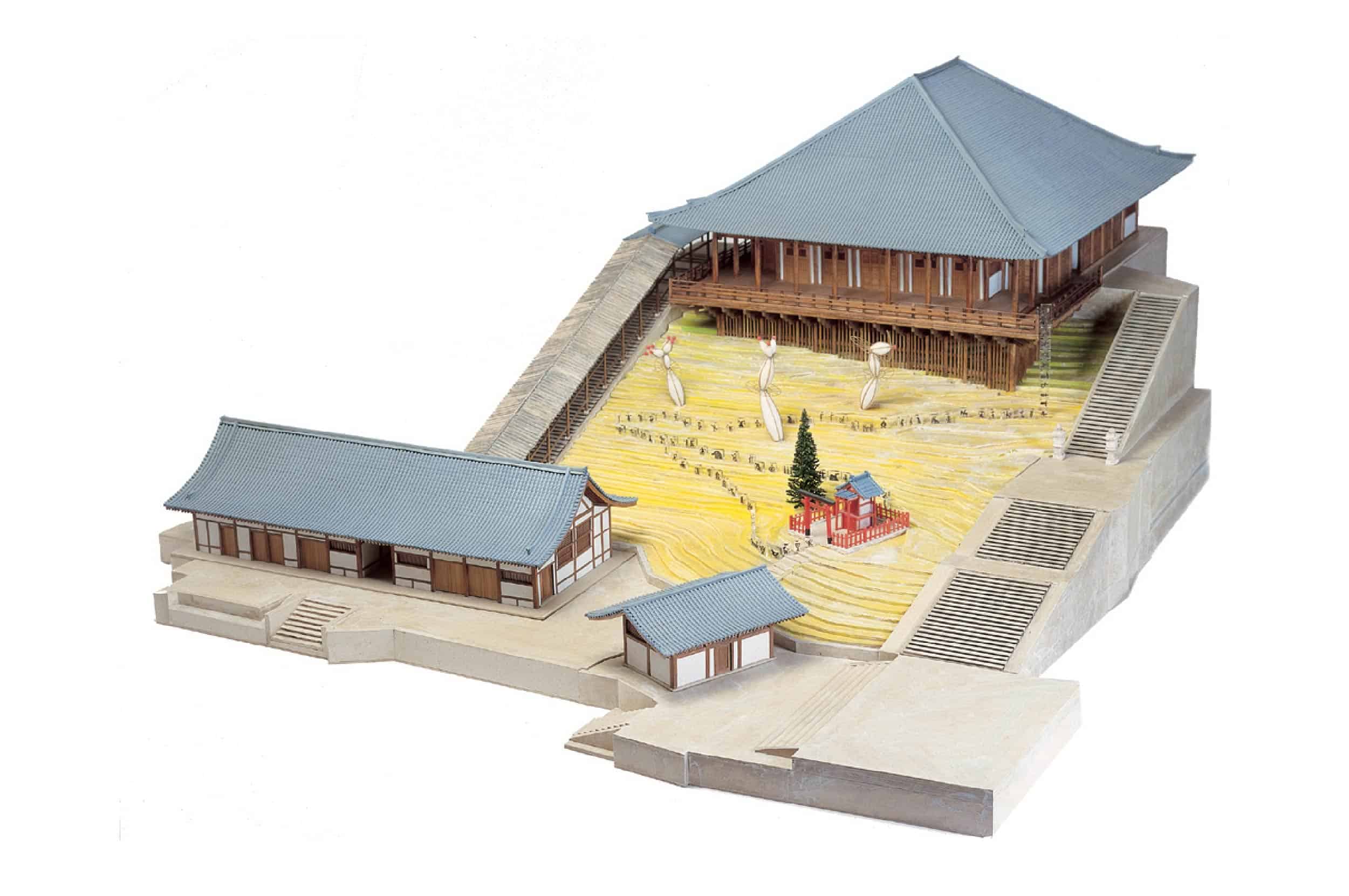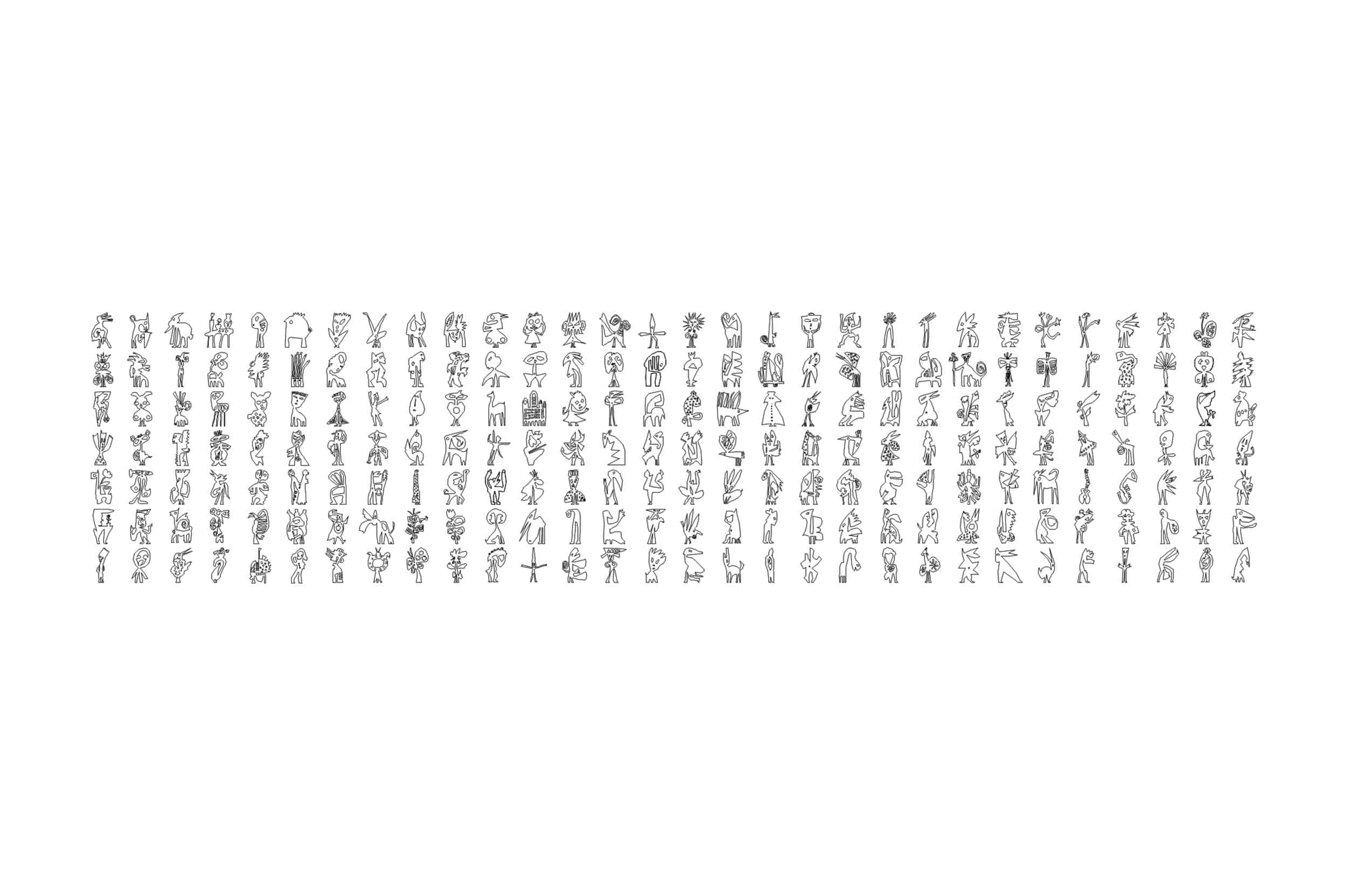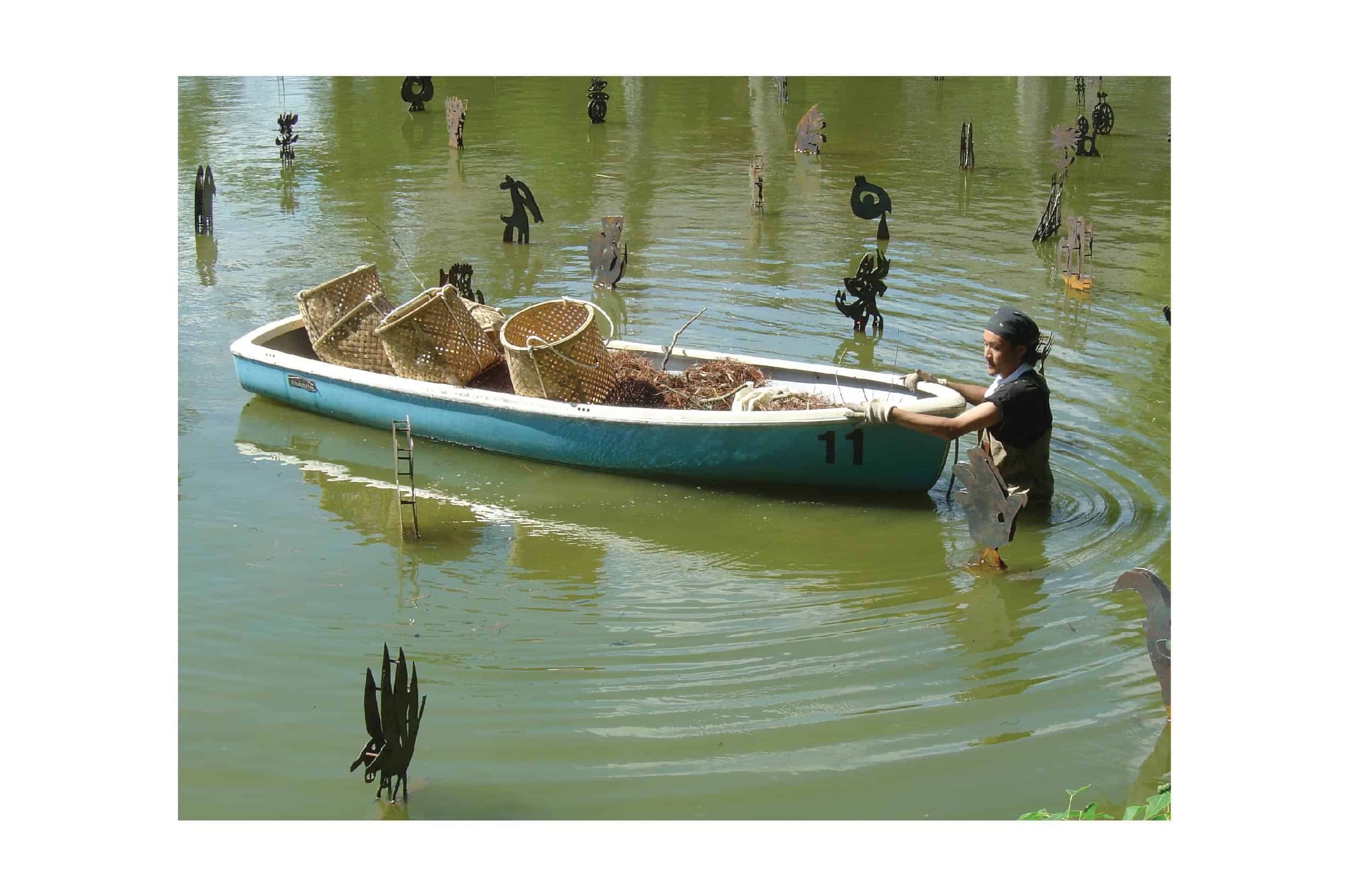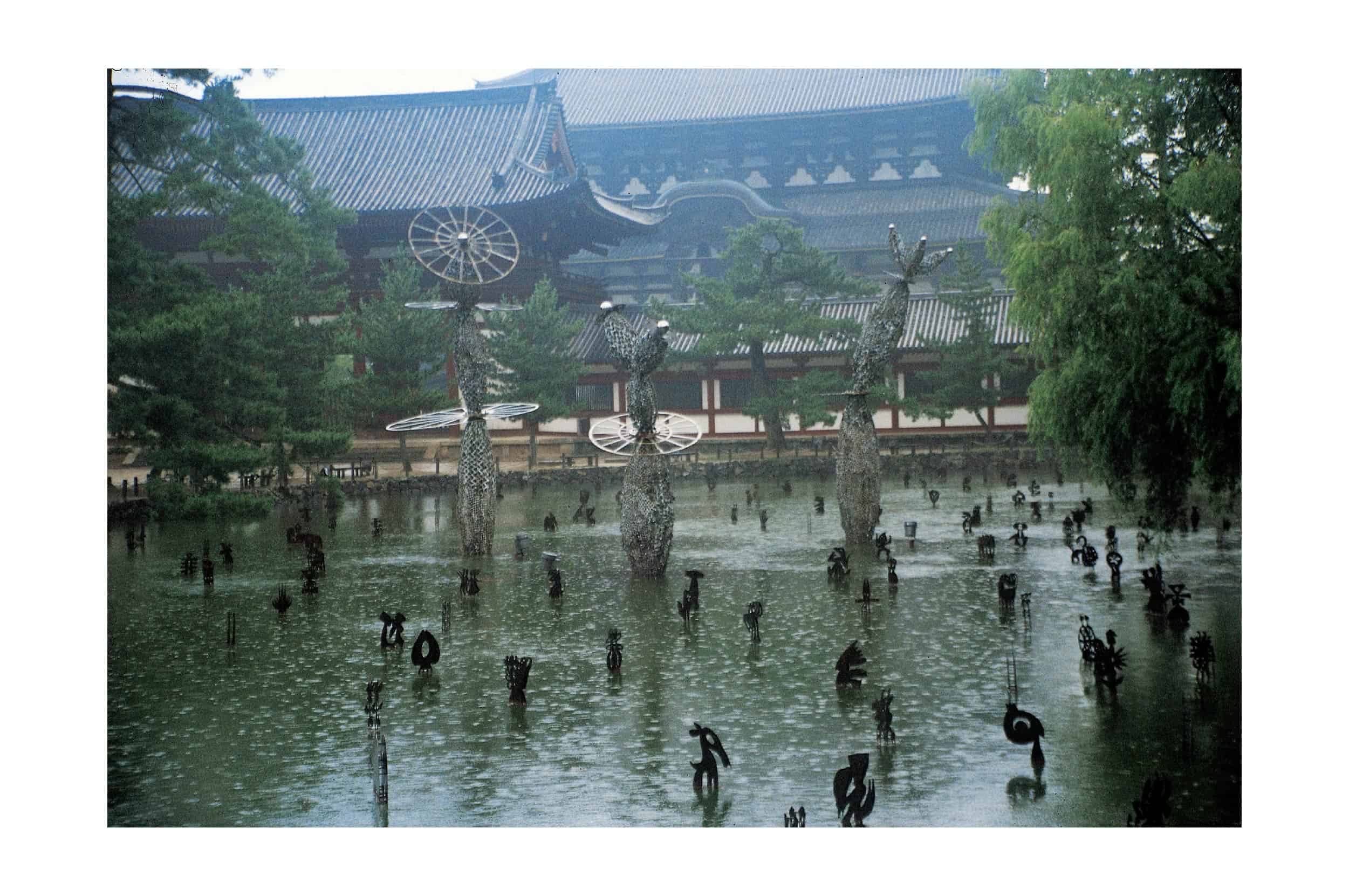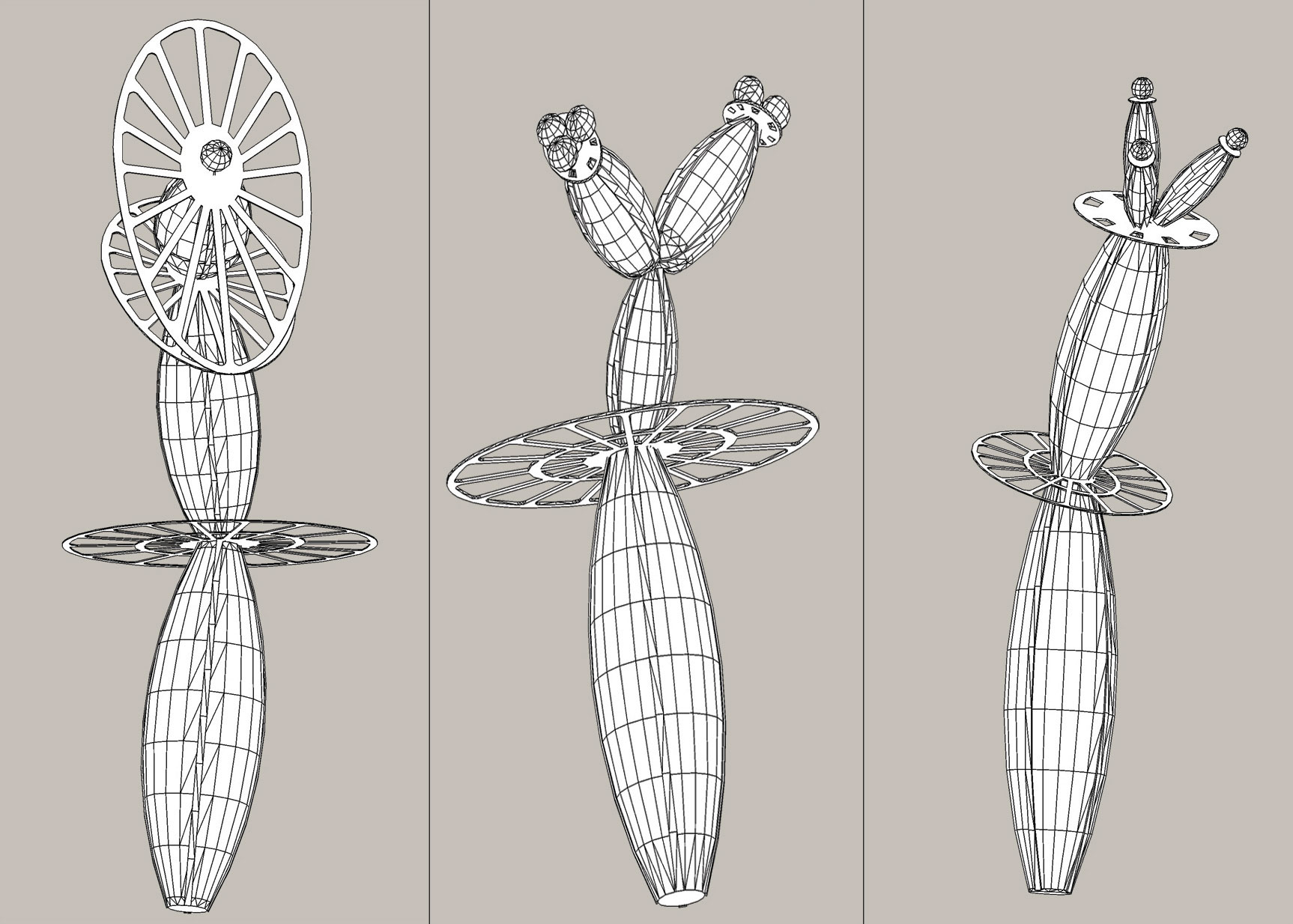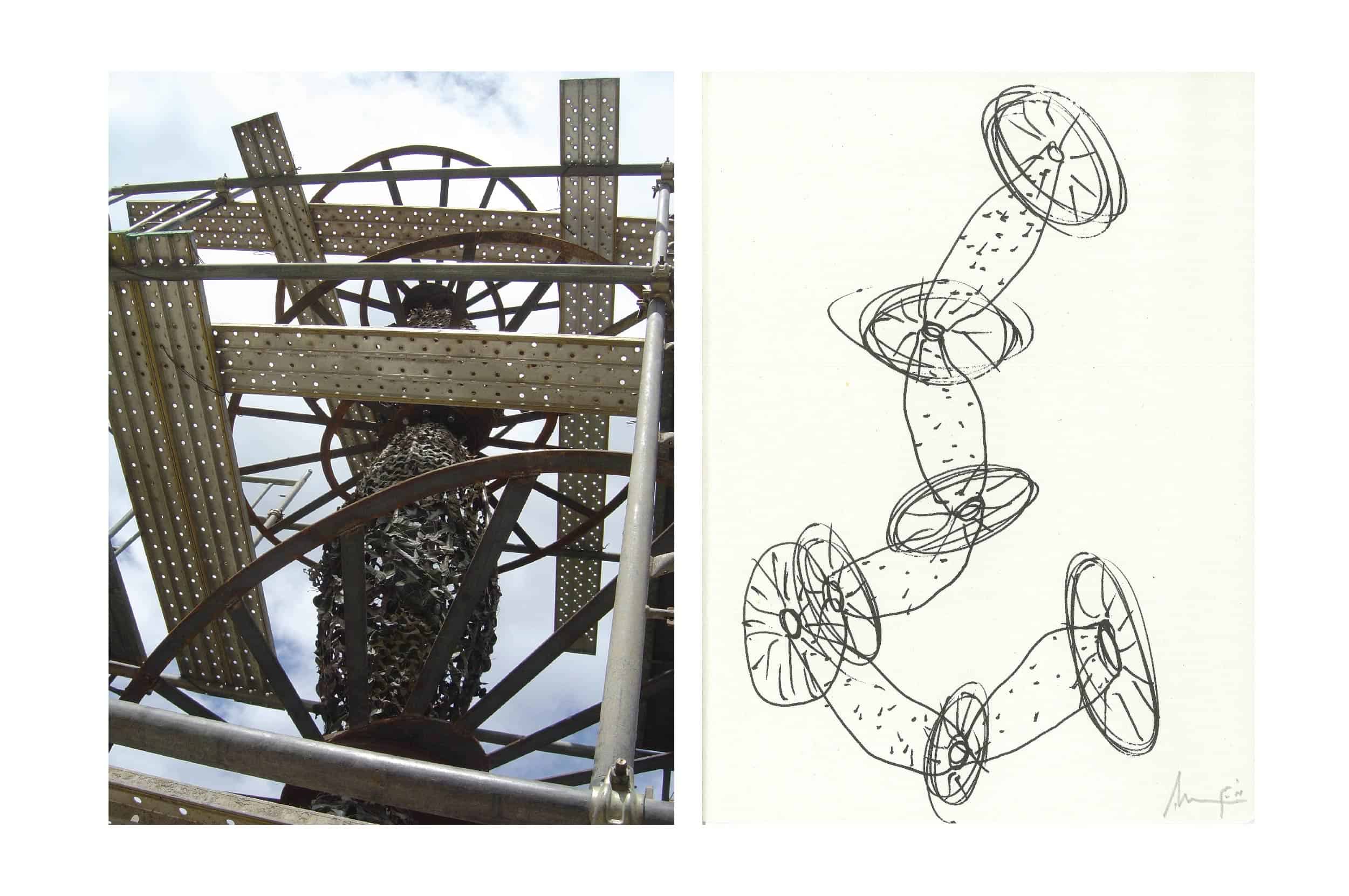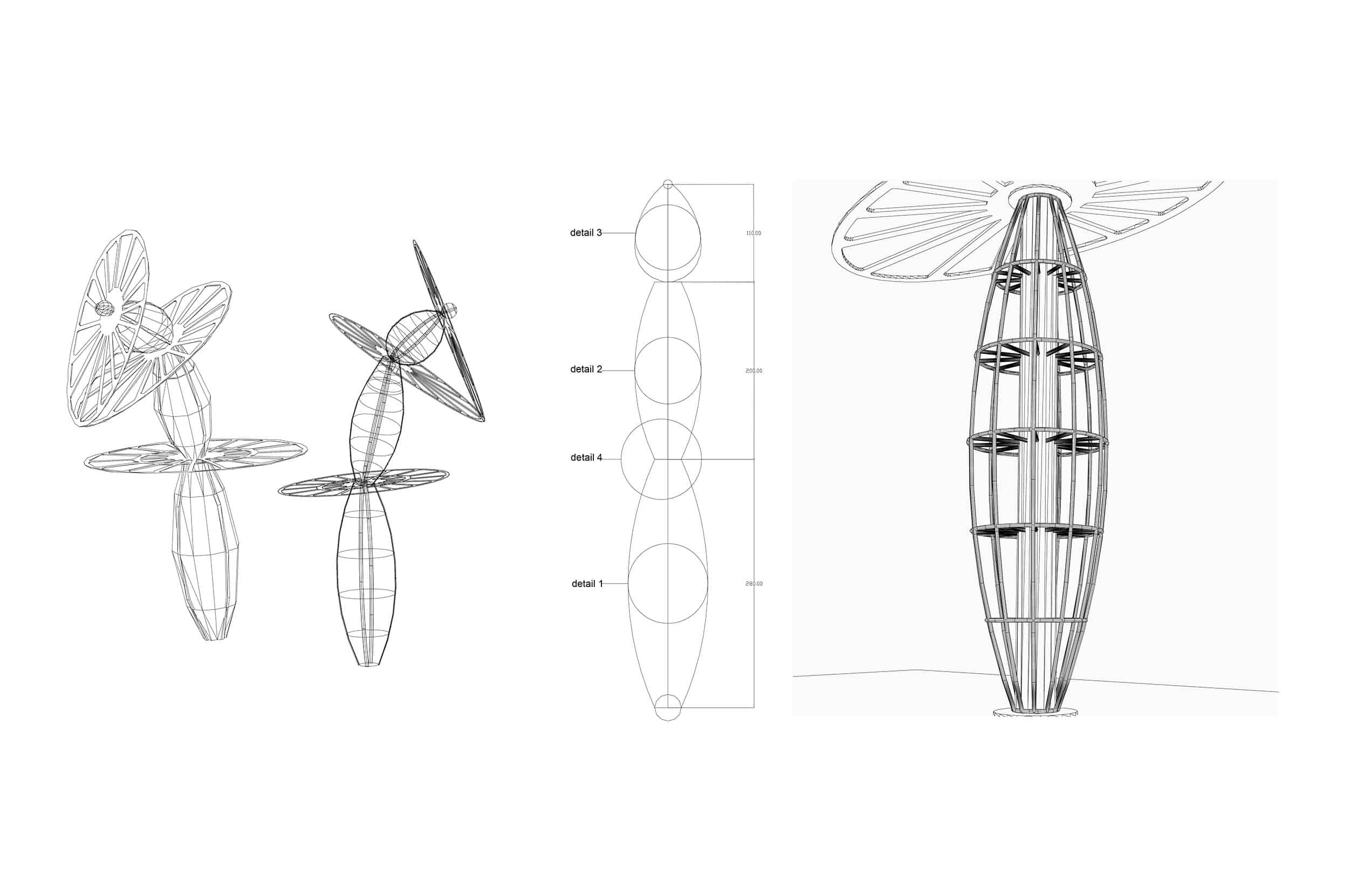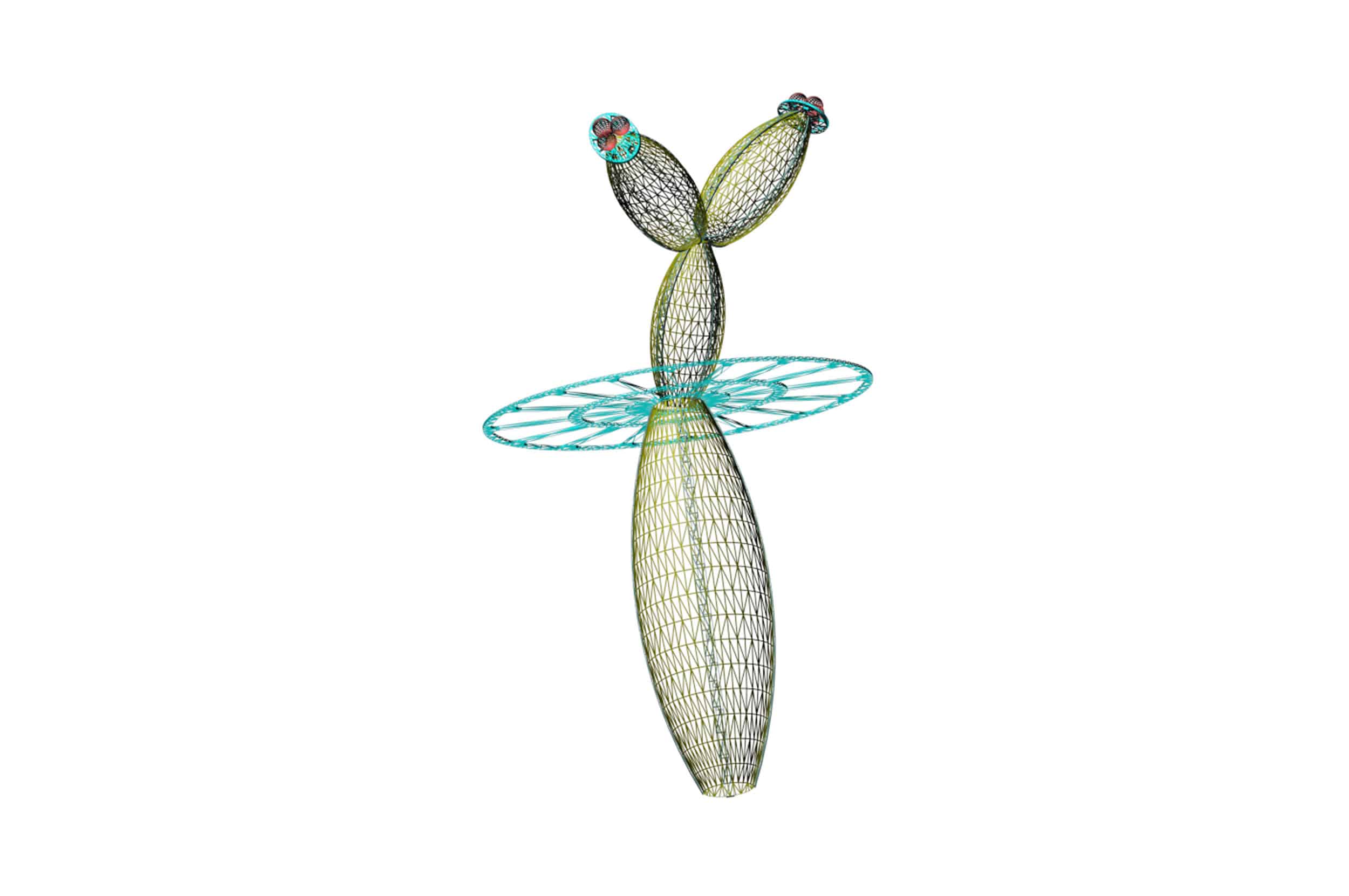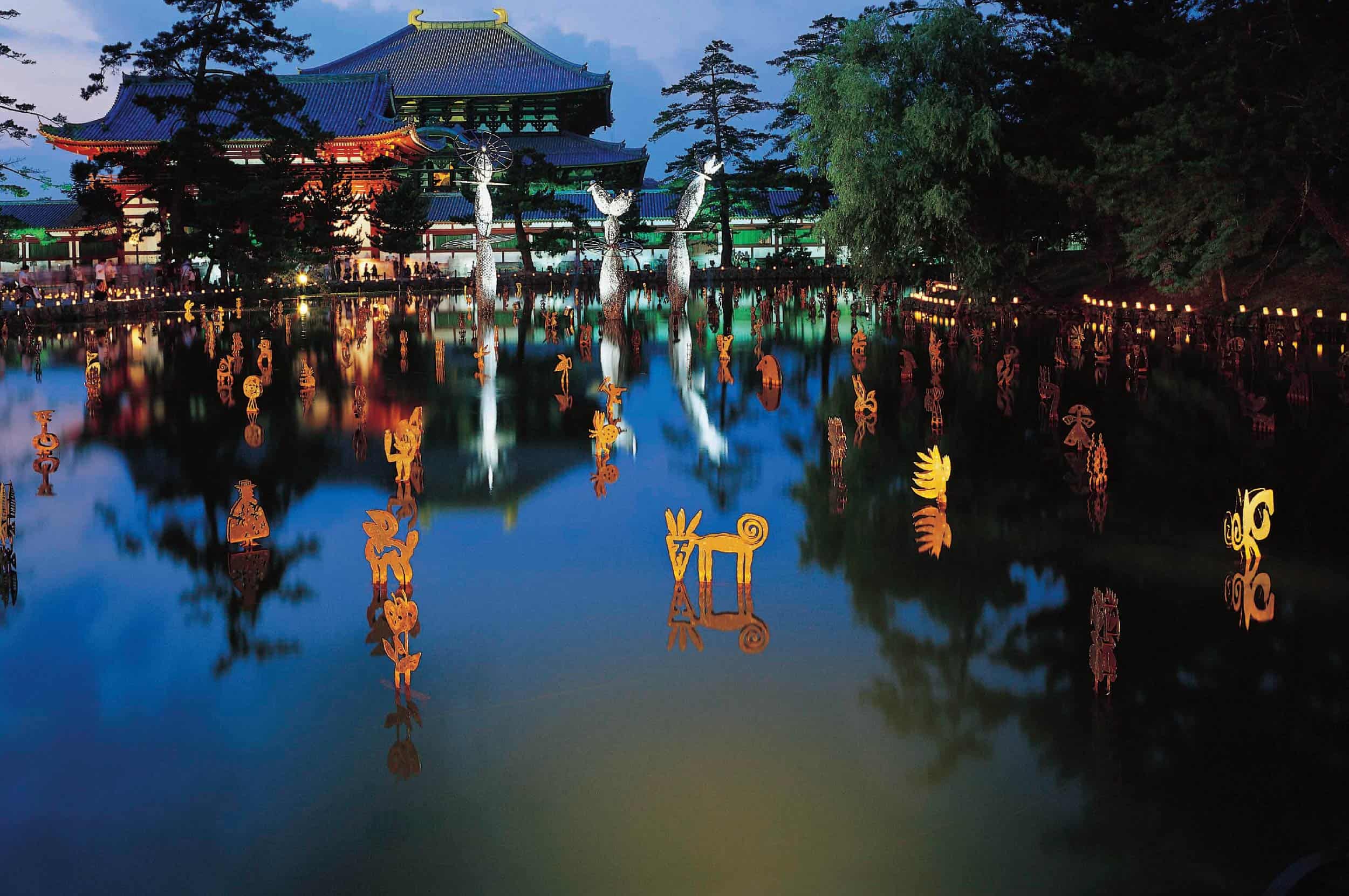
THE THREE MAGIC FLOWERS OF JITCHU
Todai-Ji Temple, Nara, Japan
Karam initiated this project in 1984, while still a doctorate student in architecture. His research on the performance spaces of Buddhist temples for his doctoral thesis led him to uncover the work of a monk, Jitchu, said to have come originally from the Middle East, who was an architect, engineer, and creator of the Omizutori esoteric performance ritual. Inspired by his work and vision, Karam conceived and proposed a temporary installation honouring the achievements of Jitchu, whose performance ritual is still enacted yearly by Todai-ji monks since the year 752. Karam submitted his art installation proposal yearly to the Todai-ji committee of monks, and was finally given approval twenty years later.
The installation consisted of almost a thousand different steel sculptures scattered over the surface of Kagami Lake and three central, large flowers made of steel and fabric. Traditional taimatsu torches inspired the shapes of the stems of the giant flowers, and the flowers themselves are abstractions of a lotus root cross-section.
This installation, the first contemporary art project to be realized on temple grounds, was unveiled at the time of year when the spirits of ancestors come back to earth in Japan. It coincided with the annual prayer of the monks of Todai-ji at Daibutsu-den for world peace, for which lanterns were lit around the lakeshore in commemoration.
